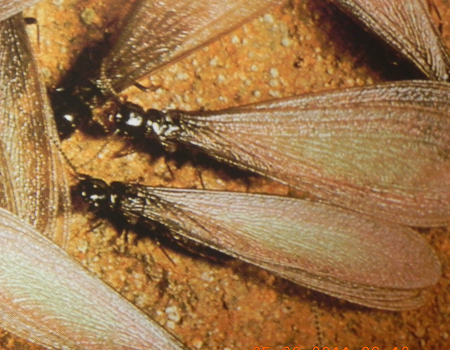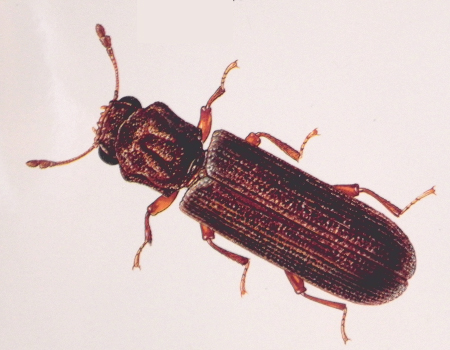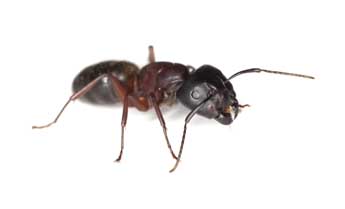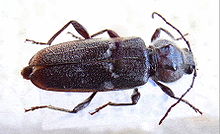
Most homeowners discover a termite infestation during the Spring when the termite colonies release many hundreds of winged insects in a short period of time. These winged termites are called swarmers. These swarmers are wither kings or queens and their sole purpose is to emerge from the parent colony, mate, and reenter the soil to begin a new and separate colony. Evidence of these swarmers are an indication of a mature colony currently present in the vicinity. The swarmers themselves are harmless, they are not able to feed on wood or other cellulose material. Termite swarmers are very weak fliers and shed their wings shortly after emerging.
Often the only evidence of an infestation are the swarmers or an accumulation of their wings in window sills or along baseboards.
The majority of the termites in a colony are workers. These workers are small white insects between 1/8" and 1/4" long. These workers have many responsibilities including construction of shelter tubes, foraging for new food sites, and taking care of newborn members of the colony.
The biggest responsibility of the workers is providing all of the food for the colony. Termite workers are the only members of the colony with the ability to eat and digest wood products. They continuously travel back and forth from the nest location to the food sources. The workers take a bite of food and process the food into a liquid that they then re-feed the remaining members of the colony. This process is called trophallaxis. A typical termite colony feeds at several different locations within their foraging range which may cover 1/2 an acre. These sites may be tree stumps, fence posts, root systems of trees, landscape timbers or your shed, garage, or home. Termites will feed on wood and anything that is made of wood like paper and cardboard.






